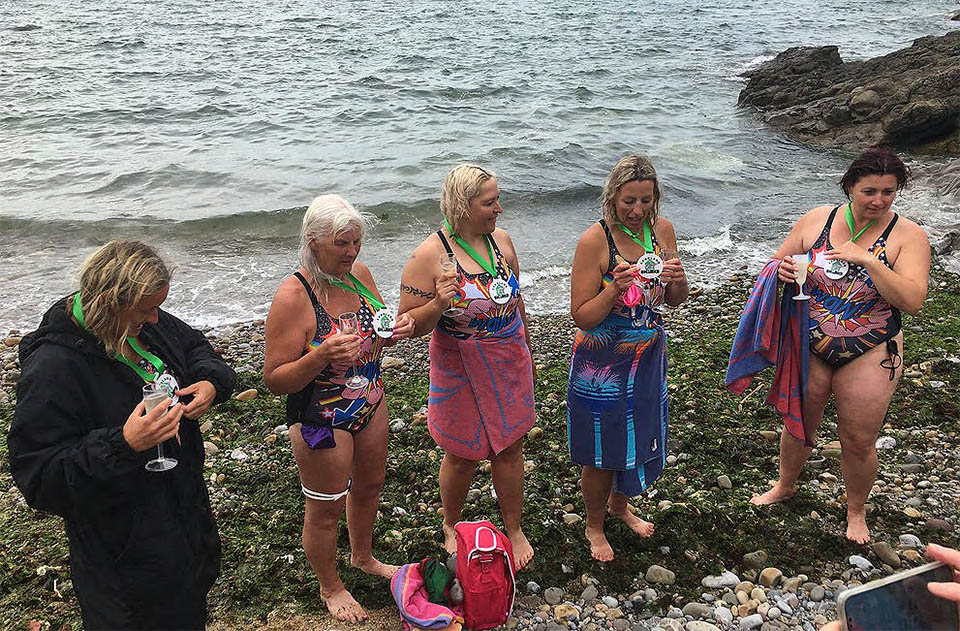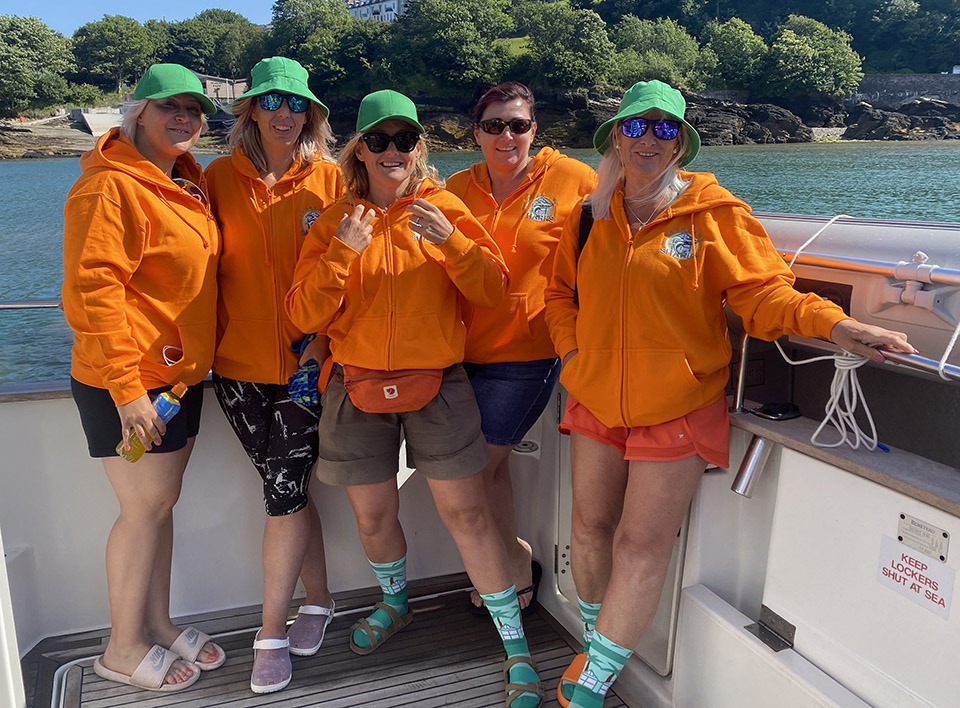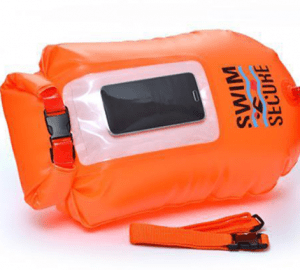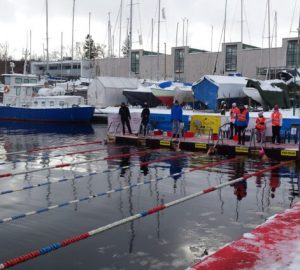
Second all-female relay swim across the Bristol Channel
The Langland Sharks swam through the night to complete this challenging crossing, says Howard Middleton-Jones
It’s the middle of the night. You’re on a small, slow-moving boat in the Bristol Channel. Your friend is in the water swimming through a carpet of jellyfish, and it’s your turn next.
This was the scenario facing Sarah Cann, Amie Davies, Kirsten Heaven, Sian Lewis (team captain) and Louise Snelgrove, five women from the Langland Sharks swim group in Swansea, South Wales, as they took turns swimming across the Bristol Channel overnight from 23 to 24 June 2023.
Based in Langland Bay, Swansea (a NOWCA open water swimming venue), the five women were on a mission to cross the notorious Bristol Channel at its widest point. They started from Ilfracombe in North Devon with the aim of reaching Langland Bay, a straight-line distance of almost 25 miles, swimming one-hour shifts.
The Bristol Channel has the second highest tidal range in the world (the highest is the Bay of Fundy in New Brunswick, Canada), and is considered an arduous and hazardous swim, with its strong tidal currents and changeable weather conditions. In fact, those currents thwarted the team’s plan to arrive in Langland Bay. Instead, they had to continue to swim with the incoming tidal current to the adjacent bay east of Langland, Limeslade Bay. They landed at 10:28 in the morning after swimming for a total of 17 hours and 8 minutes.
But why swim overnight? It’s a question of timing. The tide in the Bristol Channel can rise and fall by around 12 to 14 metres, creating powerful currents as water is funnelled into the River Severn and then pours out again. It is vital, therefore, that crossings are planned, and dictated, by the tidal flows. In this case, swimming from Ilfracombe with the ebbing tide and eventually arriving at Swansea with the incoming tide.
Despite the jellyfish, the team experienced several high points: swimming under the stars, being accompanied by a pod of dolphins, the camaraderie between them and the regular messages of support they received.
The Langland Sharks raised over £7000 for three worthwhile causes and charities; Morgan’s Army, support for families of children with cancer; 2Wish, bereavement support to those affected by a young person’s death, and the Birchgrove School Autistic unit at Swansea.
Visit the team’s JustGiving page

Thank you!
The team would like to recognise and thank the crew of the pilot boat, Shee Ann, especially the pilot, Ceri Davies of Swansea Watersports, and crew member Aston Grindod. In addition, these Channel swims require an official observer. In this case special thanks to Jayne Keeley, who offered tremendous support throughout the swim. The observer has many responsibilities, such as keeping an eye on swim stroke and watching for inconsistencies and recognising signs of hypothermia.
Some history
The first person to swim the Bristol Channel was Kathleen Thomas in 1927, who swam the shorter stretch from Penarth in South Wales to Weston Super Mare in Somerset, a total of 22 miles in a time of seven hours and 20 minutes. While the first person to swim at its widest point, Ilfracombe to Swansea, was Gareth Jones in 2009, who crossed in 22 hours.
Howard Middleton-Jones is the NOWCA Venue manager and coach for Langland Bay swimming and runs the Gower Open Water Swim Training Group.








